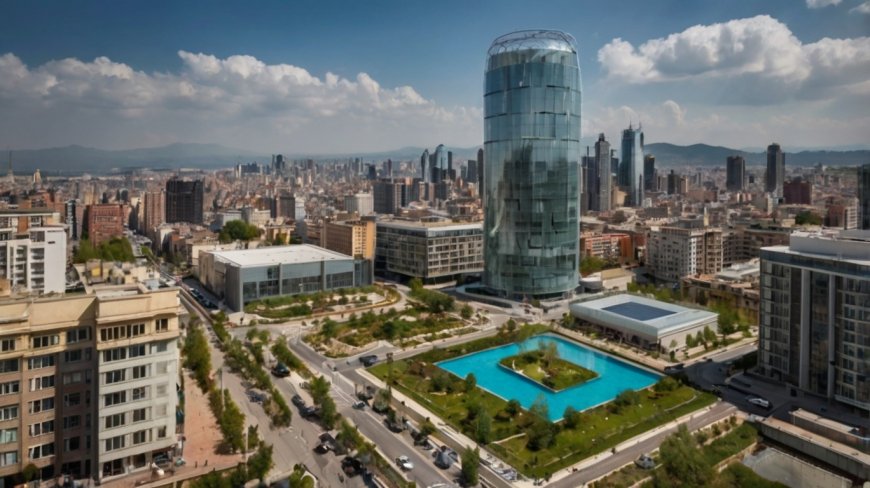The Impact of IoT on Urban Development
Learn how IoT-enabled smart cities are improving urban living with efficient transportation, utilities, and security systems.

The Impact of IoT on Urban Development
The Internet of Things (IoT) is revolutionizing urban development, transforming cities into smart, connected ecosystems. By integrating IoT devices with city infrastructure, governments and organizations can optimize resources, enhance public services, and improve the quality of life for residents. From traffic management to energy efficiency, IoT is at the heart of smart city initiatives worldwide.
This blog explores how IoT is reshaping urban development, its benefits, challenges, real-world applications, and the future of smart cities.
What is IoT in Urban Development?
IoT in urban development involves deploying interconnected devices, sensors, and systems to collect and share data in real time. This data enables cities to monitor, analyze, and manage infrastructure and services more effectively.
Key Components of IoT in Urban Development:
- Sensors and Devices: Collect data on environmental conditions, traffic, energy usage, and more.
- Connectivity: Use wireless networks (Wi-Fi, 5G, LPWAN) to transmit data.
- Data Analytics: Analyze collected data to extract actionable insights.
- Automation: Implement automated systems for decision-making and service delivery.
Benefits of IoT in Urban Development
-
Improved Resource Management
- IoT optimizes the use of resources like water, electricity, and gas, reducing waste.
- Example: Smart water meters detect leaks and monitor usage in real-time.
-
Enhanced Public Safety
- IoT-enabled surveillance systems and emergency response networks improve urban security.
- Example: Smart streetlights with integrated cameras detect unusual activities and alert authorities.
-
Efficient Transportation
- IoT supports intelligent traffic management, reducing congestion and travel time.
- Example: Adaptive traffic signals adjust timings based on real-time traffic flow.
-
Energy Efficiency
- Smart grids and IoT devices monitor and control energy consumption, promoting sustainability.
- Example: Smart thermostats optimize heating and cooling in public buildings.
-
Better Waste Management
- IoT enables real-time monitoring of waste levels in bins, optimizing collection routes.
- Example: Smart bins notify waste collection teams when they are full.
-
Improved Quality of Life
- IoT applications in healthcare, education, and entertainment enhance residents' daily experiences.
- Example: Telemedicine kiosks provide healthcare access in underserved areas.
Real-World Applications of IoT in Urban Development
-
Smart Traffic Management
- Example: Barcelona’s IoT-enabled traffic system reduces congestion by analyzing vehicle flow and optimizing traffic signals.
-
Smart Lighting
- Example: Los Angeles uses IoT-connected LED streetlights that adjust brightness based on activity levels, reducing energy consumption.
-
Air Quality Monitoring
- Example: London deploys IoT sensors to monitor air pollution and inform policies to improve air quality.
-
Public Safety Systems
- Example: Chicago’s "ShotSpotter" system uses IoT to detect gunfire and alert law enforcement.
-
Smart Parking
- Example: San Francisco uses IoT-enabled parking sensors to guide drivers to available spaces, reducing time spent searching for parking.
-
Disaster Management
- Example: Japan uses IoT sensors to monitor seismic activity and provide early earthquake warnings.
Challenges in IoT-Driven Urban Development
-
Data Security and Privacy
- IoT systems collect vast amounts of sensitive data, raising concerns about breaches and misuse.
- Solution: Implement robust encryption, access controls, and compliance with privacy regulations.
-
High Implementation Costs
- Deploying IoT infrastructure requires significant investment in hardware, software, and connectivity.
- Solution: Seek public-private partnerships and phased implementation strategies.
-
Interoperability Issues
- Integrating devices from different vendors can be challenging due to varying standards and protocols.
- Solution: Adopt open standards and promote vendor collaboration.
-
Maintenance and Scalability
- Managing and scaling IoT networks in large cities can be complex and resource-intensive.
- Solution: Use cloud-based platforms and AI for efficient IoT management.
-
Digital Divide
- Unequal access to technology may exclude some communities from IoT benefits.
- Solution: Develop inclusive policies to bridge the digital divide.
Future Trends in IoT for Urban Development
-
5G-Powered IoT
- Faster and more reliable networks will enable real-time data processing and advanced IoT applications.
-
AI Integration
- AI will enhance IoT by providing predictive analytics and automating complex processes.
-
Sustainable Cities
- IoT will play a crucial role in achieving sustainability goals, such as reducing carbon footprints and improving energy efficiency.
-
Decentralized Infrastructure
- Blockchain technology will ensure secure and transparent data management in IoT systems.
-
Citizen-Centric Solutions
- Future IoT applications will prioritize citizen engagement and address community-specific needs.
Best Practices for Implementing IoT in Urban Development
-
Start with Pilot Projects
- Test IoT applications in small-scale pilots before city-wide deployment.
-
Ensure Stakeholder Collaboration
- Involve government agencies, private companies, and citizens in planning and execution.
-
Focus on Data Governance
- Establish clear policies for data collection, storage, and usage to protect privacy and security.
-
Leverage Open Standards
- Use interoperable technologies to enable seamless integration across systems.
-
Plan for Scalability
- Design IoT systems that can grow and adapt to future urban needs.
Conclusion
The Internet of Things is driving a paradigm shift in urban development, enabling smarter, more efficient, and sustainable cities. By leveraging IoT technologies, urban planners and governments can address pressing challenges such as traffic congestion, energy consumption, and public safety while enhancing the overall quality of life for residents.
While challenges like security, cost, and interoperability exist, adopting best practices and fostering innovation will ensure the successful implementation of IoT in urban development. As IoT continues to evolve, its impact on cities will undoubtedly redefine the future of urban living.

 datawaves
datawaves 





